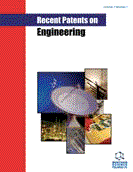
Abstract
Introduction: The SARS-CoV-2 virus causes COVID-19, a highly contagious disease. Meetings between COVID-19 patients, their families, and medical professionals are no longer safe. To meet their patients, doctors and patients' families must take extreme precautions. Even with these stringent safety precautions, there is a chance that he or she will be affected by COVID-19. In this context, remote patient monitoring via IoT devices can be a highly effective system for today's healthcare system with no safety concerns.
Methods: This paper describes an IoT-based system for remote monitoring of COVID-19 patients that uses measured values of the patient's heart rate, body temperature, and oxygen saturation, the most critical measures required for critical care. This device can monitor the observed body temperature, heart rate, and oxygen saturation level in real time and can be easily synchronized with a ThingSpeak IoT cloud platform channel for instant access through a smartphone. When the sensor value exceeds the system's safe threshold, the system will send an email alert to the system user. Some people may notice a decrease in oxygen saturation without any symptoms or respiratory problems. This system can be very useful for early COVID-19 identification in this case. The proposed IoT-based technique is based on an Arduino Uno system and has been tested and validated by a large number of human test participants. As an example, five sample results are shown in this paper.
Results: The system yielded promising results. When compared to other commercially available devices, the system's results were found to be accurate, with a maximum error rate of less than 5%, which is quite acceptable. The system's data can be saved in the ThingSpeak cloud server for further analysis. This system requires a unique email and password verification to maintain system security and user data privacy. This patient monitoring system has grown in popularity during this COVID-19 pandemic due to its uniqueness and diverse medical applications. Many people's lives are impacted daily when illnesses are not identified in a timely and accurate manner, denying us the opportunity to provide medical care. To deal with such scenarios, this system will help to monitor a COVID-19 patient's specific parameters, predict the patient's status on a regular basis, and send an email alert to the system user if something abnormal occurs.
Conclusion: As a result, this IoT-based smart healthcare solution could help save lives during the current COVID-19 pandemic. This technology is easy to use and reduces the need for human intervention.
Keywords: Patient monitoring system, Internet of things, ESP8266, COVID-19, Arduino UNO system, ThingSpeak, artificial intelligence.
[http://dx.doi.org/10.3390/electronics9091439]
[http://dx.doi.org/10.1007/978-3-319-69715-4_2]
[http://dx.doi.org/10.4108/eai.15-12-2016.2267790]
[http://dx.doi.org/10.1007/978-3-030-97929-4_17]
[http://dx.doi.org/10.1007/s00521-021-06440-6] [PMID: 34539091]
[http://dx.doi.org/10.1016/j.avb.2020.101541]
[http://dx.doi.org/10.1109/ICCONS.2017.8250646]
[http://dx.doi.org/10.1007/s11227-021-03765-w]
[http://dx.doi.org/10.1007/s11277-020-07474-0]
[http://dx.doi.org/10.1016/j.imu.2021.100588] [PMID: 33997262]
[http://dx.doi.org/10.1016/j.bspc.2020.102149] [PMID: 32834831]
[http://dx.doi.org/10.1007/s11042-021-11111-8]
[http://dx.doi.org/10.1109/SPICSCON54707.2021.9885682]


























